Interview: Sae Fujita & Shoichi Kaneda
In addition to her work as an artist, Sae Fujita teaches as a part-time lecturer at KCUA, where Shoichi Kaneda also teaches as a professor in painting. They both went on exchange as students 21 years apart; Kaneda in 1994 and Fujita in 2015. They both share their unique experiences in this interview and the minor differences in their generations. (Interview: Kosuke Hashizume)

Looking back on the experience
Hashizume: I believe your impressions have changed over the five years you left RCA and have been back home, but could you tell us about leaving Japan?
Fujita: I had been studying at KCUA since I was an undergraduate, so one of the reasons I wanted to study abroad was for a fresh environment. I’d never been abroad on my own; I was busy getting ready and left in a rush. When I arrived in England, I initially stayed in a guesthouse for about 10 days.
Kaneda: How did you find that?
F: I heard about it from a KCUA senior who went on exchange before I did and told me that there was a nice place run by Japanese people. I thought I could get some information about the local area from a guesthouse. I looked for a house on the net.
K: Ahhh, you guys had the net. Didn’t exist in our time! (laughs)
F: That sounds rough! (laughs) Without the net I would never have been able to go alone. In the beginning I spent about 10 days learning at a language school in the morning; in the afternoon I went to see houses, and after that it was either more house hunting or galleries and museums.
K: How long were you there before school started?
F: Just before; in the first week of September, about the 6th or 7th. Orientation started at the end of September, and there was a cruise on the Thames river a few days later.
K: A cruise on the Thames!
F: That’s right. I went, and talked my head off in English. It was a bit too much for me though, so when I got home, I broke out in a fever. (laughs)
K: As to be expected! (laughs) So were there different Thames river cruise parties for each class?
F: Not at all. I just talked to the people who were there. I made friends with a lot of people from different majors. If I hadn’t joined the cruise, I would never have met them; I was glad I did.
(*The fine art and design courses are on different campuses.)
K: Good on you!
F: Thanks! (laughs)
K: I went in ’94, I reckon. I would’ve been totally different. I was thrown in, introduced to the class; we were told about our assignments...
F: Wow...
K: You bet. My heart was pounding. I was just thrust into the class. But there was Art Bar, which was a big help.
H: What’s ‘Art Bar’?
K: It’s a pub on campus.
F: Yeah, I went too.
K: When we finished work, we’d all go out for a drink or the like. Normally I’d be hesitant to speak because I’m not sure if I’m making sense or not, but with a few drinks I’d end up talking a lot. My friends were always candid with me. That helped a lot. I made lots of friends too.
F: Same.
K: I went to the animation department, but I chatted with students from other majors as well. I chatted with the teachers, too. I even went for a drink with the director of Aardman Animations!
F: Cool!
K: They made Wallace & Grommit. The director came to teach at our school. We went to Art Bar with him and heard him talk about his work. It’s a graduate university, so everyone was mature. Whenever I had a problem, I’d go to Art Bar.
H: Unlike Japan, the pay as you drink style makes it a little easier to go to. If you’re going with everyone to eat at an izakaya (a Japanese pub), it’s more of a commitment.
F: I agree with you there. You only need a few coins clinking in your pocket.
K: Ah, right!
H: In England, it’s common to go for a drink with your teachers too, right?
F: Definitely.
H: Maybe part of the way art and culture is created happens in places like these.
Travels while abroad
H: Can I ask you about your time off? Did you take any trips?
F: I did a lot of travelling. Aside from London, I went to Paris, Venice and Scotland.
K: I went to Edinburgh.
F: Really? It’s such a nice place.
K: There’s music and theatre festivals there, like the Edinburgh Festival. It’s basically free, with all kinds of shows and stand-ups. I saw Ryuichi Sakamoto and the Tokyo Shock Boys there.
H: Really? By the way, did you have any bad memories from Scotland, Fujita-san?
F: Nothing especially gloomy! (laughs)
K: You’re an upright international student!
F: I thought I’d take a trip on my own. I wanted to go somewhere legendary like Stonehenge or something like that, when I noticed that the Loch Ness was in the UK. I read about the Nessie Museum with all its video materials, and I thought that would be interesting.
K: Hahaha! I’d love to go!
F: I thought: I’ve gotta see this! First, I went to Edinburgh and Glasgow to look at galleries and stuff. Then I booked a bus tour of Loch Ness. I thought that the tour would include a trip to the museum. I was asked if I wanted to join an optional tour to see a castle across the loch by boat, but I said no because I wanted to see the museum. So, I got on the bus, surrounded by families; I curled up (laughs) and was so excited. When we got close to the Nessie Museum, I thought “there it is! That’s where I’m going!” but the bus drove straight past. It stopped at the pier further on. “What the heck is going on?” I was thinking. (laughs)
K: You were had.
F: I asked the tour guide if the museum tour was included and they said it wasn’t. I asked if it was OK to walk, but they said it was too dangerous. I didn’t end up going... I had a cup of tea at a café on the pier and looked out at a statue of Nessie by myself. (laughs)
K: It’s great to just chill out though! Just like a real exchange student.
F: It was a bit lonely... the weather was terrible. The view was amazing though.
K: Even though you didn’t see the castle or Nessie? (laughs)
F: I was annoyed that there really was nothing there (laughs). I felt sad. I had a look at some souvenir shops, which was a bit interesting. Anyway, I bought a postcard of Nessie and one of a man in a Scottish kilt lifting it up (laughs). I thought maybe it could become a work of art.
K: Did you make one? Of the memory of Loch Ness, I mean.
F: I didn’t end up making anything, but I’d love to go again. I’m still interested in the video footage in the museum.
RCA Technicians
H: Kaneda sensei, though you learned animation at RCA, the techniques used between 1994 and now have changed completely, right?
K: They have. I reckon the time I went were the last days of film reels. We thought completely in film. Sound was recorded on DAT*. We had an assignment called Sound Project; each group was given a DAT, which we used to record sounds which would be complied into a single tape. Take a restaurant scene; we would record sounds of clinking dishes, people talking, and background music. Put together and played back you get a kind of restaurant sound.
*DAT: Digital Audio Tape. It was the most common high-quality audio format used until the early 2000s.
F: Cool!
K: Our assignment was to make a one-minute story.
H: That’s interesting.
K: Features like this are probably included in things like Adobe Premier and After Effects now. It was still great to be able to watch the actual tape turning and learn the basic structure of making things hands-on, like where to end it, or when to fade it out.
H: It must be a bit hard to understand how it works on a computer.
K: Also, when I asked the school technician to develop the film I had taken, they told me to see an independent photofinishing store by myself. It was a great experience to see the photofinishing store. It was in the middle of London and really cool. There was a whole row of Bolex (film) cameras.
There were some students who were making digital works, too. They were kind of geeky, making animations in a corner of the room that looked like they were straight from Nintendo NES. We all wondered why they were doing that, because in those days people thought film was better. It all changed after that though.
H: The times change. You mentioned the technicians; Fujita-san also mentioned technicians in her account of studying abroad.
F: That’s right. There were technicians in the RCA studio. You had to show them what you wanted to do, then book the printing table, otherwise you couldn’t make anything.
K: Right.
F: That was quite hard. Even if you made a booking, it would be cancelled suddenly. Also, they wouldn’t let me make my own silk screen plates. I couldn’t do what I wanted to so easily.
K: No way.
F: Either way, in the time I had available I tried things like photo etching.
K: Right. Is there a difference between a technician and say, a tradesman or an artist?
F: There is. The technician is there to provide technical advice. There were a few tutors to give technical advice on your work, and you would talk to them on a regular basis. In my case it was about three times? There was a clear division between those who taught techniques and those who thought about work concepts.
K: That’s very different from KCUA. Here you have to do it all yourself, right?
F: That’s right.
K: These technicians, were they RCA graduates?
F: I’m not really sure, but I think a lot of them were artists that had become technicians? The silk screen technicians were also artists.
K: That’s interesting, that there was a clear division.
F: At times I thought that it was great that there was a clear difference, and if I was at RCA longer and became friends with the technicians they might have let me do some platemaking; but in the short time I had it was difficult to do what I wanted in discussions with them.
K: Right, I was wondering what the difference is; if it was silk you could adjust the amount of ink when printing, which is kind of like drawing? So, you could fine-tune things I guess.
F: Right.
K: So, you mean you need skills to communicate with technicians?
F: Aside from the platemaking process, we were free to do the printing ourselves, though the technicians would watch us the whole time. It didn’t feel like we were being rigidly controlled though. It felt like they were very supportive.
Impact on work while studying abroad
H: You tried a number of new things while you were abroad, right?
F: Yes. I bought an SLR camera before going abroad in order to snap a few pictures, and I always had it on me wherever I went. I ended up going to the National Gallery many times by chance. It’s so great that entry is free and that you can take photographs; I wanted to take photos of the works. I would make a quick sketch on a tiny piece of paper and take it to the museum. I’d stick it on a piece of transparent cord, dangle it in front of a painting and take a photo of it; I did that for a while.
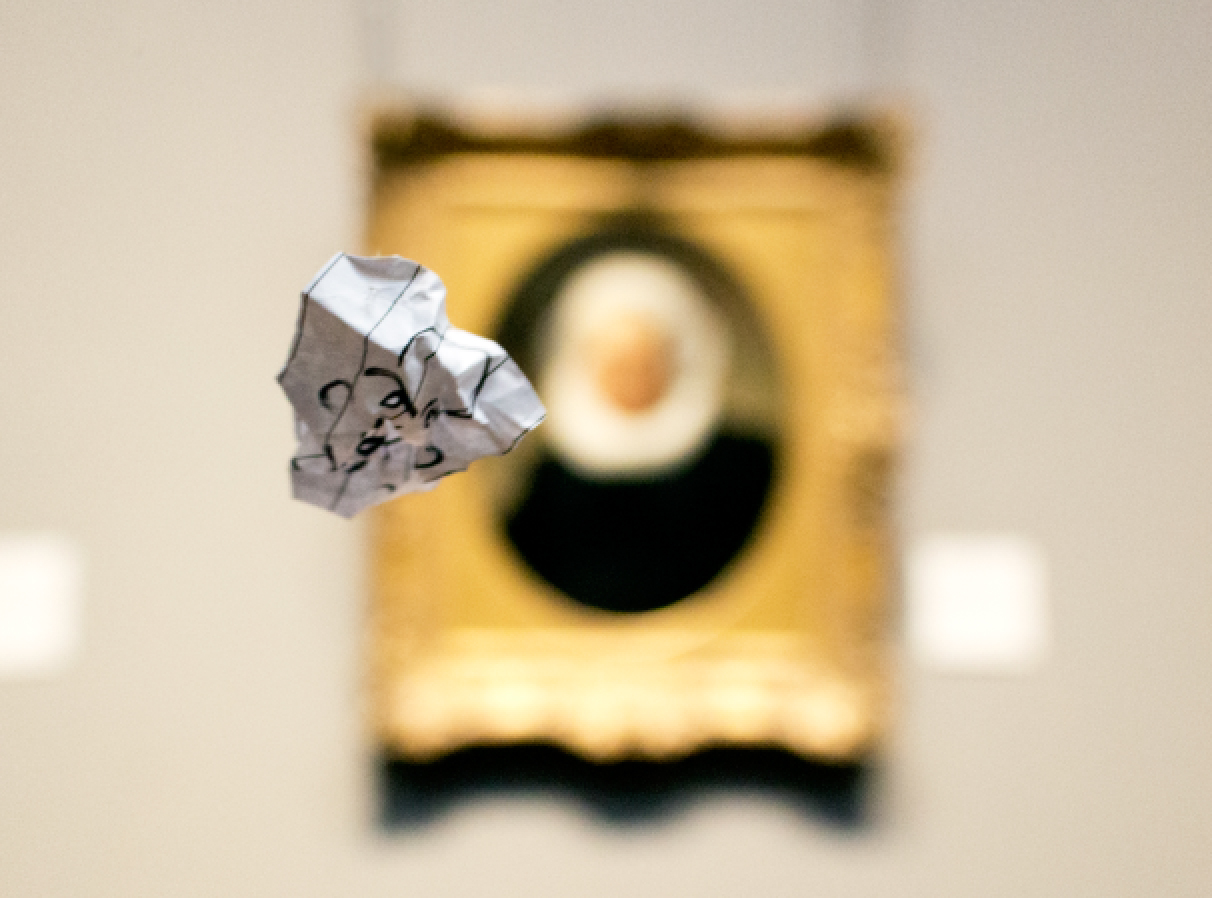
H: You make a book out of all those photos, right?
F: Even though I wanted to make an artwork from the photos, I wasn’t sure about the best way to show them; I thought I could do it if it was in the form of an artbook or zine. I think it’s great I managed to find a way to do that.
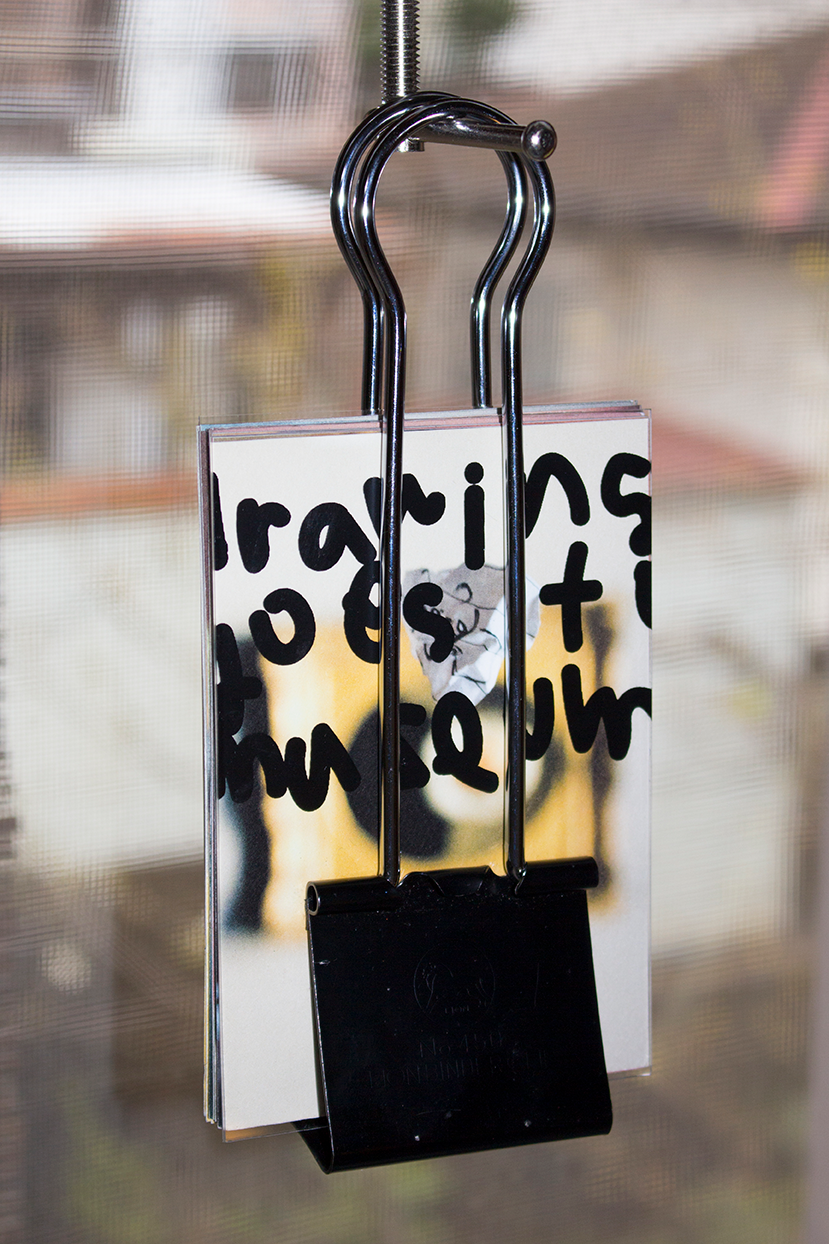 (Drawing goes to museum, 2016)
(Drawing goes to museum, 2016)
H: In a separate interview before you went, you said that you started in painting but that your interest shifted to printmaking; was the idea of making a magazine something that was added on after your trip to London?
F: You could say that; when I was studying abroad one of the things I thought about was how interesting printing techniques are. Chatting with friends, I began to feel that I was interested in forms of printmaking. Up till then I was on the fence about whether to work in the field of painting or printmaking, but I made up my mind to go down the road of printmaking.
H: Looking at your work after London, I thought that you had a very broad view of printmaking or printing itself. You also use ASCII art too, right?
F: That’s right. I randomly came across a site that changes images into ASCII art, so I converted some drawings into ASCII art and compiled them into a book.
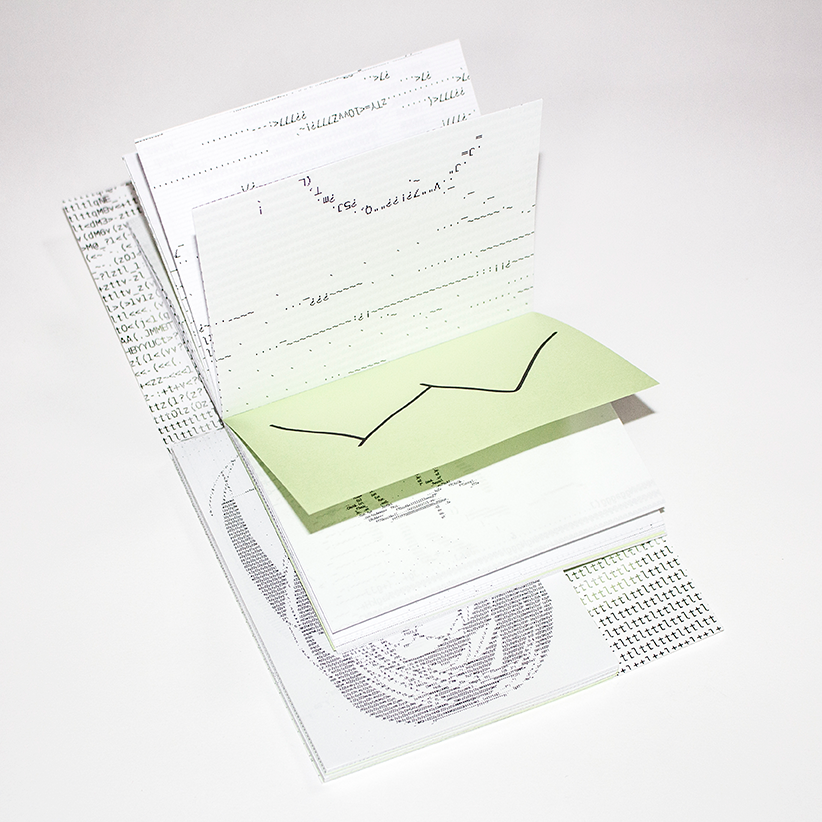 (BUNDLED AA, 2019)
(BUNDLED AA, 2019)
H: Right. You also make frottage works too.
F: I do. I tried a lot of things in parallel. When I was studying abroad, I was told that Risograph, a printing technique invented in Japan, was popular throughout Europe at the time. “Ah, so that’s what that is!” I thought, and tried it out for myself.
H: Which part of Risograph printing it made you think “that’s what that is!”
F: At KCUA, after you’ve completed the initial four types of printmaking (woodblock, mimeograph, lithograph and copperplate), you choose the one you want to go with, but at RCA everyone also does silk screen in addition to lithography.
K: Yeah, true.
F: Everyone tries lots of different types of printmaking. I like that style of learning. It was something new.
K: So basically, everyone tries everything related to printing?
F: That’s right. For example, one of my classmates in my major was also a drag queen, and he would do his makeup, then press his face against a sheet of makeup remover and exhibit the sheet itself as a print.
H: Right.
F: I realized that was also a way to make works.
K: You said that there was a Japanese technique which had made its way overseas.
F: Yes.
K: Is there something completely different you noticed about printing as a Japanese person? Japan has its own printing and printmaking techniques. Any reason that there are so many different people in the RCA’s printmaking course, or something like that?
F: Ah, right; the way people see things is more... how do I say? There are so many people; some are fixated with copperplate engraving, some do makeup prints (face printmaking). It’s such a broad view of the field. It’s not like I think that’s different to Japan. It’s just broader.
H: Is that also from your experience of trying so many techniques after returning to Japan? You also do ceramics as well, right?
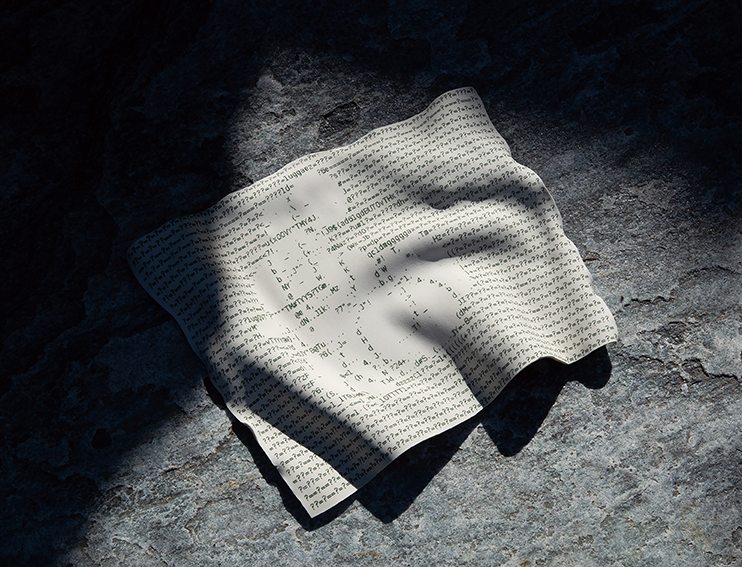 (DDD(warp), 2020, Silkscreen, Ceramic)
(DDD(warp), 2020, Silkscreen, Ceramic)
F: Ah, you may be right there! I’ve been into ceramics recently too. Even before going abroad, I made panel artworks and tried lots of things, but I was beginning to feel like they were dead ends. I’d always thought about trying something simple on thin surfaces. The last work I made before going abroad was a motif of Jason’s mask. That’s when I gave up on panels. After that I started printing works on paper using silk screen.
(looking at some works on https://sfjt.pw/pm/2016.html#2016mp3)
K: You made these after studying abroad?
F: That’s right. At the time, I used these scribbles I had made in the corner of my notebooks, sometimes while on the phone—things I never thought I’d make into works—then blew them up to huge sizes and made silk screen prints of them.
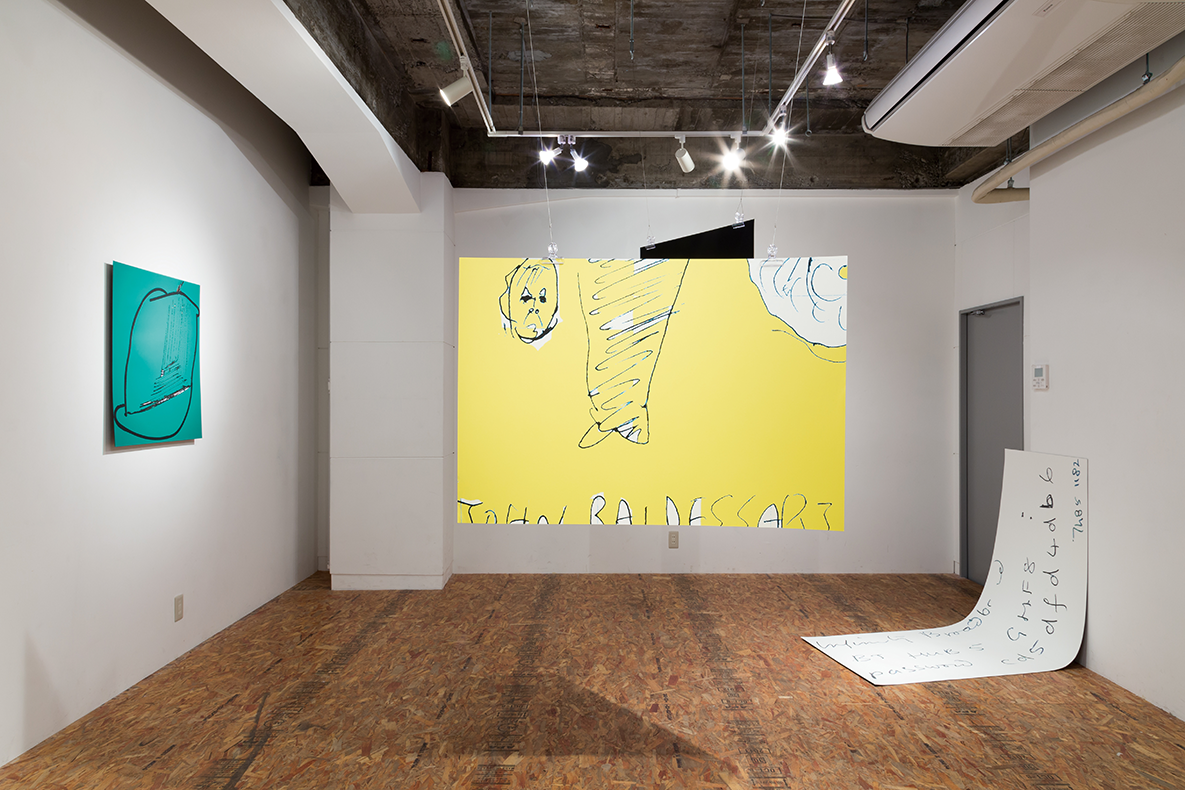 (Pinch in, Pinch out, 2016 installation view)
(Pinch in, Pinch out, 2016 installation view)
K: They’re quite simple!
F: That’s right. I made a rule to never use white paper; these are white prints on black paper.
K: Right.
F: I tried to keep things simple on paper, like what roles the colours play in the image and what should come to the front; things like that.
K: Some sort of magic that you get with a finished print? What do you call it? Like, making your voice louder?
F: Yeah (laughs), definitely.
K: You’ve started using the whole surface of works in printing. Do you know what brought you to that point?
F: I did a lot of things overseas, like taking photos and photo editing. Also, there was an exhibition of Cy Twombly at the gallery with an absolutely huge painting and lots of little drawings. I think the lines from the small drawings had been blown up and made into the big painting, and I was really interested in the way the two worked together. I can’t really put it into words well (laughs).
K: Is that so.
F: Cy Twombly’s tiny pencilled lines blown up into this huge painting left a strong impression on me. That was when I started wanting to magnify the little drawings I had made.
K: Right. This paper base, or paper and ink? is being handled in a really daring way. Even though they use so much ink—almost way too much perhaps (laughs)—it sits well. It kind of feels like they were made to their fullest, I guess.
F: That may just be the case. After coming back I was not sure what to do for a while. I thought that even if I held an exhibition of works, I wouldn’t be able to make anything good for it.
Mindset before and after coming home
H: Coming home from RCA, finishing graduate school and wondering what to do as an artist must have been a sensitive time for you; how did you feel about it?
K: Actually. I came home feeling happy with myself.
F/H: What?!
K: I became good friends with a Japanese painter in London, and we often met up. Over Christmas, he invited me to his shared studio. Christmas is something like the New Year holidays in Japan, right? But when I went to his studio, everyone was working on something.
F/H: No way!
K: I was shocked; I thought I’m gonna have to work hard or I’ll lose to these guys. When I saw them painting pictures, even though it was Christmas, I decided to come home. I got a studio once I was back. I made up my mind to continue working as an artist. Students overseas, they never seem like they’re at their wit’s end, even if they have a part time job on the side. It’s like they’re artists just for claiming to be so. For me, it was a big thing seeing them like this. I came home thinking the only thing I could be was an artist.
F: That is really cool.
H: There must have been a completely different impact on generations with the internet available and those without.
K: Completely! You could only get international information from Art magazines. Also, every year there were exchange students at KCUA, and when we showed them a magazine called Freeze, they told us that they’d seen Damien Hirst! It was unbelievable, what they’d seen. They told us that the Saatchi Gallery was really cool. We only had titbits of information so the shock of going to London was pretty real. It was amazing. I came home feeling satisfied.
H: How about yourself, Fujita-san?
F: Not sure. All I could think about at first was what I was going to do with my work. I had no idea what kind of work to make. At RCA, there are technicians and tutors working there. I thought it wouldn’t be bad to work as a technician. I realized I had that option available to me. I wasn’t sure if I should work on my practical skills or become an artist producing work.
K: Really?
F: That was probably because I was doing printmaking. I thought a lot about it. Right now though, I’m happy doing both (laughs)
H: There is something difficult about choosing a path at the fork in the road.
K: It’s like you could’ve been a woodblock printer, too. Makes sense.
F: I did think about doing that, too. Also, I may not have been thinking about anything in particular (laughs). I was so busy with what I was doing at the time.
H: Overall, studying abroad gave you the chance to think about a lot of things, right?
K: I always recommend that students go on exchange. It won’t help them live longer, but they’ll start thinking about ways to keep on being an artist if they go overseas.
F: That’s right; I agree completely.
K: I went via New York on my way back, and I kept meeting people who were living their lives the way they wanted to (laughs). I tell students that rather than getting some award nobody knows about, it’s definitely better for them to go abroad and meet a lot of people.
F: At RCA there was a really nice girl from Saudi Arabia in my class who was very thoughtful of others, and before we parted ways she said to me “your work is really cool; don’t you dare quit.” She said it with such conviction in her eyes. I’ll never forget it, and I think about it often. Those few words made me realize that the day I quit, it’s over (laughs). I’ve got connections with all kinds of friends who are working as artists on SNS, and it’s great to see them going for it!
K: Right. That’s the best part about going overseas. Making up your mind to keep going.
F: Exactly. Since then, I’ve never thought about giving up.

Sae Fujita
1992 Born in Kyoto, Japan
2017 MFA in Printmaking, Kyoto City University of Arts
2015 Short-term exchange program at the Royal College of Art, London
Shoichi Kaneda
1970 Born in Kyoto, Japan.
1994 Joined Exchange Programme of animation course at the Royal College of Art, London
1995 MFA in Painting, Kyoto City University of Arts
 from RCA-KCUA exchange
from RCA-KCUA exchange